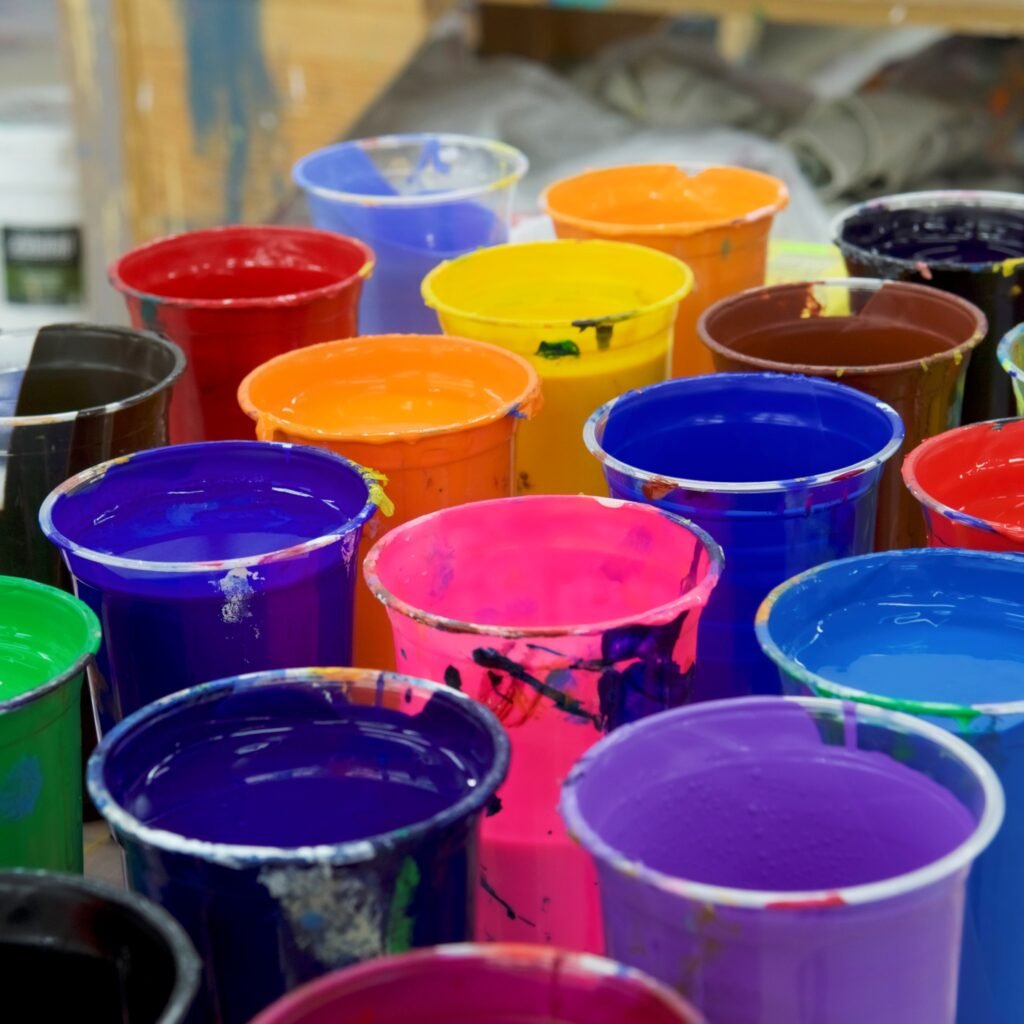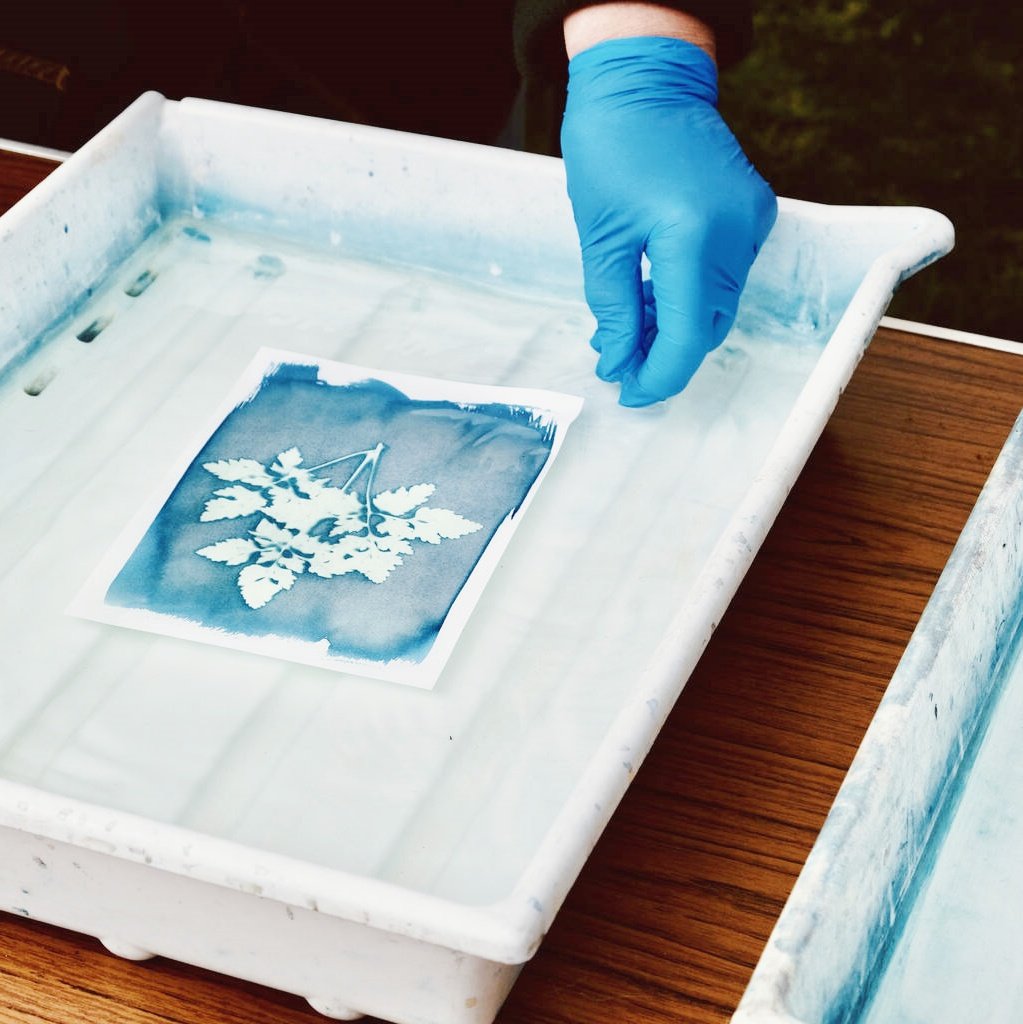Inhaltsverzeichnis
Ein umfassender Leitfaden zur Verwendung von Plastisol-Tinte in verschiedenen Branchen
Plastisol-Tinte is a special type of ink used for printing on fabrics, plastic, and more. It is made from PVC-Harz und Weichmacher (oily liquids). This ink is thick, durable, and works well on dark colors. Let’s explore how it’s used in different industries!
1. Was ist Plastisol-Tinte?
Plastisol-Tinte is not water-based. It stays wet until heated. When heated to 320°F–330°F, it melts and sticks to materials.
Key Properties:
- Deckkraft: Covers dark fabrics easily.
- Dauerhaftigkeit: Survives washing and weather.
- Kostengünstig: Cheaper than other inks for big jobs.
Why People Love It:
- Brighter colors than water-based inks.
- Easy to use for beginners.
- Works on cotton, polyester, and plastic.
2. Industries That Use Plastisol Ink
A. Textile & Apparel Industry
Plastisol-Tinte is used on 75% of screen-printed clothes (like t-shirts).
Vorteile:
- Stretches without cracking.
- Stays bright after 50+ Wäschen.
- Perfect for dark fabrics.
Beispiel: Marken wie Gildan use plastisol for 90% of their graphic tees.
Challenge: Not breathable. For eco-friendly options, try Oeko-Tex certified inks.

B. Automotive & Manufacturing
Plastisol-Tinte prints labels on car dashboards and wires.
Vorteile:
- Heat-resistant: Reduces fading by 40%.
- Sticks to plastic and synthetic materials.
Fallstudie: Union Ink makes fire-safe ink for car interiors (meets FMVSS 302 standards).
C. Promotional Products & Signage
Plastisol-Tinte prints on mugs, bags, and outdoor signs.
Vorteile:
- Wetterfest: Used on 60% of PVC banners.
- Fast to print with Wärmeübertragungen.
Beispiel: Siser’s heat-transfer ink speeds production by 30%.
D. Industrial Coatings & Safety Gear
Plastisol-Tinte adds grip to floors and prints on safety vests.
Vorteile:
- Anti-slip: Cuts workplace accidents by 25%.
- Erfüllt OSHA safety rules.
Beispiel: Magnolia Plastics coats floors in 10,000+ factories.
E. Emerging Uses
- 3D-Druck car parts (saves 50% on prototyping).
- Medical gowns with 99.9% germ protection (tested by Johns Hopkins).
3. How to Use Plastisol Ink: Step-by-Step Guide
A. Pre-Print Preparation
- Choose Your Material: Works best on polyester or cotton blends.
- Set Up the Screen: Verwenden Sie ein 110–160 mesh screen.
B. Printing Techniques
- Schichtung: Add ink multiple times for a raised feel.
- Underbase: Print white first on dark fabrics.
- Spezialeffekte: Mix in Puff oder metallisch additives.
C. Curing Best Practices
- Temperature: Heat to 320°F–330°F für 60–90 Sekunden.
- Tools: Verwenden Sie ein Durchlauftrockner (wie HERR) or heat press.
- Test: Verwenden Sie ein thermometer to avoid under-curing.
D. Post-Print Quality Checks
- Stretch Test: Pull the fabric to check for cracks.
- Wash Test: Soap and scrub to test colorfastness.

4. Fixing Common Problems
| Problem | Lösung |
|---|---|
| Ink cracks | Adjust curing time; pre-treat fabric. |
| Farben sehen verblasst aus | Use more ink or a lower mesh screen. |
| Tinte verläuft | Thin the ink; press softer. |
5. Eco-Friendly & Safe Options
Phthalatfreies Plastisol (wie Wilflex Epic™) is 200% more popular seit 2020.
Safety Tips:
- Folgen OSHA rules for handling.
- Recycle 30% of waste with solvent-free cleanup.
6. Future Trends
- Plant-based inks (wie Dow’s EcoFast™).
- Hybridtinten (mix plastisol + water-based).
- Robots for faster printing (Kornit Digital).
7. Conclusion
Plastisol-Tinte is versatile, durable, and great for big projects. Work with trusted suppliers like Rutland oder Internationale Beschichtungen for the best results!
FAQ
Ist Plastisol-Tinte wasserfest?
Yes, if cured fully.
Can I use it on nylon?
Yes, but pre-treat the fabric first.
Wie lange dauert es?
6–12 months if stored in a cool place.



